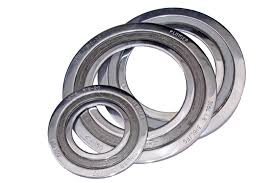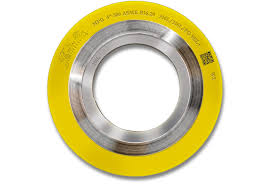The evolution of the spiral wound gasket, and its standards, is indicative of the potential for increased efficiency and asset reliability in the industrial sector.
With a long history of innovation, spiral wound gaskets have emerged as essential, not only for the total cost of ownership but also for the ongoing effort to minimize emissions in the pursuit of a net-zero economy. Proper application of these assets can bring the industry closer to achieving a safer and greener tomorrow.
The 1940s witnessed the introduction of designs employing "soft metal" fillers for high-pressure applications, along with early concepts for inner rings to reinforce gaskets against radial buckling. Subsequently, the 1960s led to new materials such as PTFE and exfoliated graphite as alternative filler materials.
However, the evolution was not confined to spiral wound gasket technology alone. As boiler technology advanced, the need for oversight and standardization grew. Many aspects of modern standards such as ASME B16.5 and B16.47 for pipe flanges, ASME B31.3 for process piping and ASME Boiler and Pressure Vessel Code Section VIII for the design and construction of pressure vessels were developed at this time.
With the development of standards for boilers and pressure vessels, additional considerations were made for the gaskets integral to their efficient operation. Through the 1940s, the American Standards Association (ASA) incorporated the existing API benchmarks into its standards, culminating in the approval of a new standard, ASA B16.20.


By its final edition in 1988, the API standard had expanded to include spiral wound and jacketed gaskets, along with ring joints. In January 1993, the new ASME B16.20 Metallic Gaskets for Pipe Flanges standard was introduced and subsequently approved by the ANSI as a national standard.
A research paper presented in 2017 by Jose Veiga, former global technical director with Teadit, and David Reeves, former president of Global Downstream and Chemicals with Chevron and well-known bolting and sealing expert, titled "ASME B16.20 Spiral Wound Gaskets Performance Testing," (PVP2017-65371) highlighted the importance of controlling winding density. It showed that by controlling the winding density — the ratio of metal to filler — across all sizes and pressure classes, spiral wound gaskets could achieve and maintain a tight and reliable seal. This marked a departure from the prevalent "soft windings," which allowed for over-compression, thereby transferring the sealing load to the outer guide ring which is a non-sealing element.


